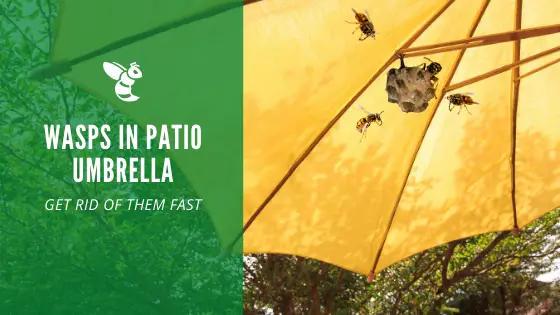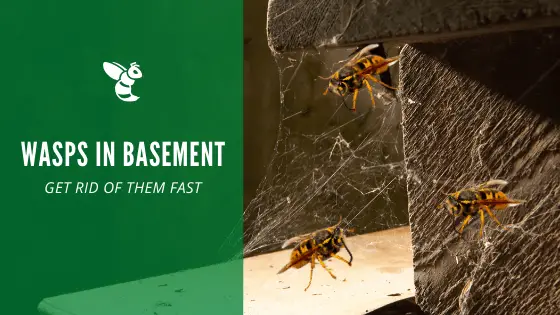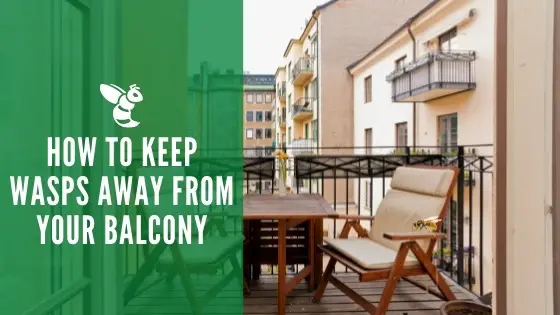Paper Wasps Life Cycle
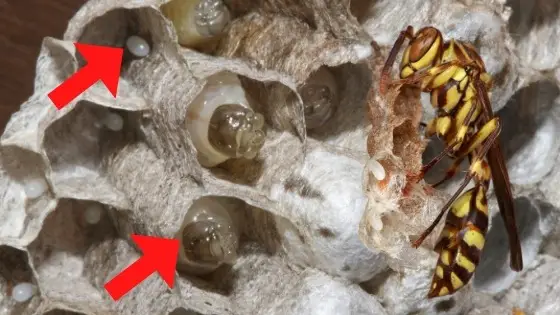
The paper wasp is an insect that can grow up to one inch in length. It is relatively thin, with black wings that fold up together when they are resting. Many varieties of the paper wasp have yellow markings on their body. People often confuse them with a yellowjacket or hornet. However, their life cycle and behaviors are quite different. Do you know how to spot a paper wasp? Knowing what to look for will help you identify the insect that you’re dealing with.
Paper Wasp Nest Building Stage
When spring arrives, the paper wasp nest is created with the workers that are immediately laid by the queen wasp. Her nest starts out very small, with just the nucleus of the eggs intact. As the workers take over the process, they will expand the nest as there is a need for more room. The queen will continue her focus on expanding the colony. Consuming wood fibers to create the paper-like material that is used for the nest is what the different compartments and cells are made of.
Paper Wasp Egg Stage
Each cell of a paper wasp nest will contain one egg only. The paper wasp egg looks small in size and white in color. There are no legs or distinctive features on it. That egg will begin to develop rather quickly as it’s fed. The cell they are in remains open during the development of the egg, so different workers can tend to the eggs and the larvae. This ensures that they will be able to thrive.
Paper Wasp Larvae Stages
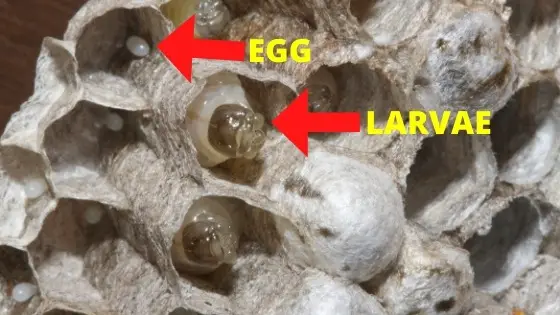
When the larvae have been laid in the paper wasp nest, they will be brought food by the worker wasps. This will include insects like caterpillars and spiders. The growing period will last approximately 1.5 months before the larvae are grown enough to leave the cell they are living in and begin their work. The colony can be made up of 20 to 100 paper wasps.
How Long Do Paper Wasps Live?
The queen paper wasp has a life cycle of up to one year. They are the only wasp from the colony that will survive the winter. They usually leave the nest when the weather turns too cold, and they find a place to safely hibernate.
When the weather becomes warm again, they will emerge from their home to rebuild their nest and start the process of establishing a colony again.
Paperwasp Lifespan
The worker wasp has a life span of about 12 to 22 days. Their main job is to find food to feed the larvae of the colony. They are quickly replaced with new workers as the cycle continues.
Conclusion
It’s entirely up to you if you want to remove a paper wasp nest from your home or property. They can be aggressive when they feel threatened, so leaving them around can put you and your family at risk.
They’ve even been known to sting a family pet that’s in the yard, and pets can sometimes experience reactions to the venom in the sting. If you’re removing the nest on your own, you can do so with the right products and protective gear. Otherwise, it’s a good idea to leave this kind of removal to the professionals that know what they’re doing.

